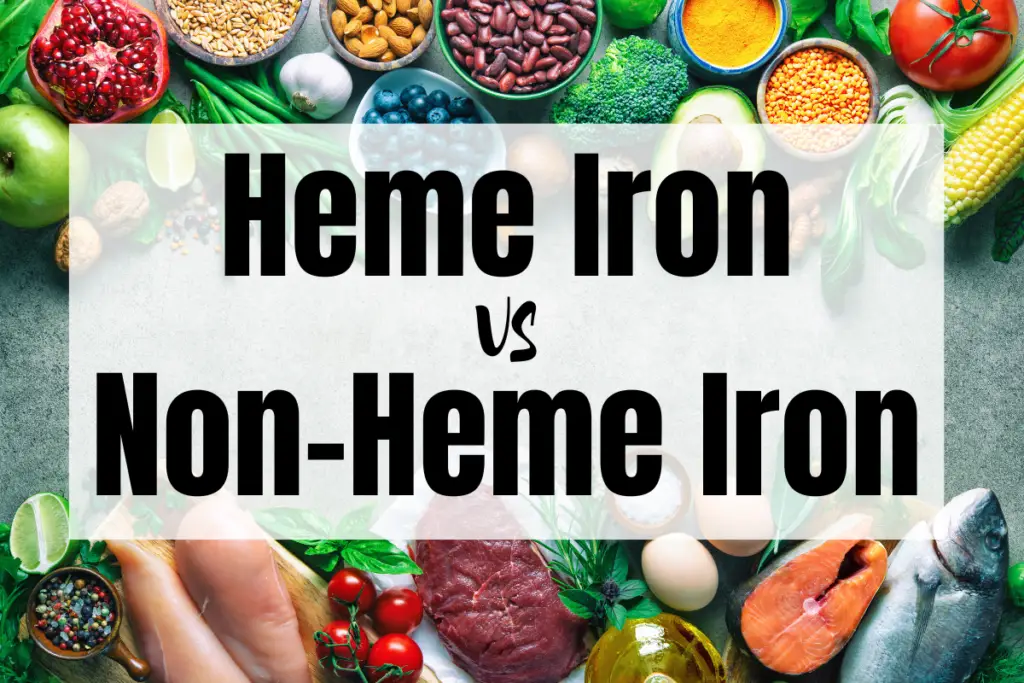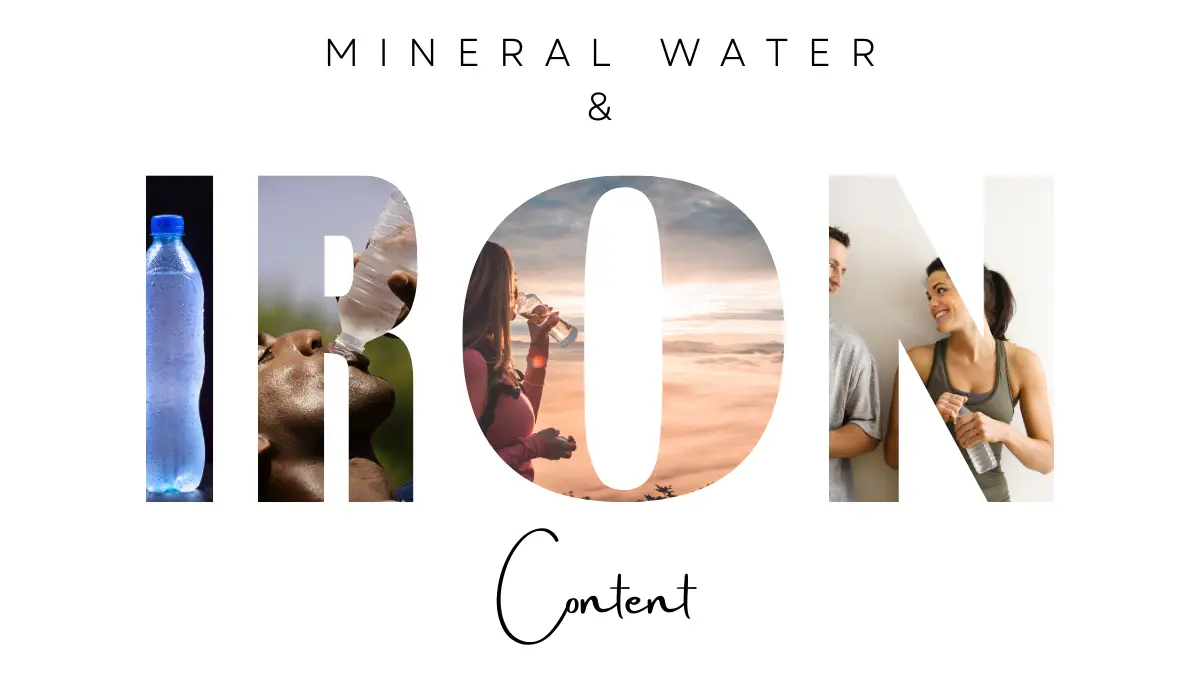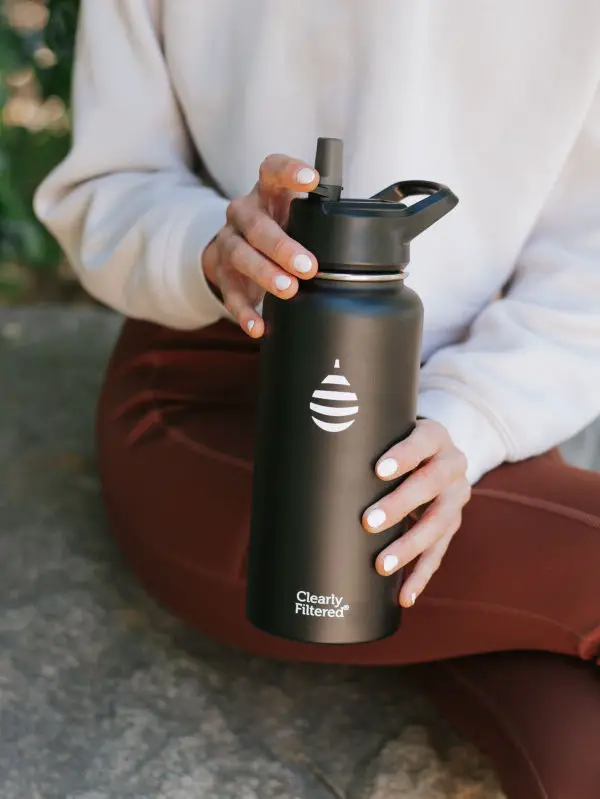Iron is a vital mineral that our bodies require for various functions, from oxygen transport to overall health. While dietary sources like meat and vegetables provide a significant portion of our daily iron intake, some people turn to alternative sources, including mineral water.
In this article, we’ll delve into the world of iron in mineral water, examining its bioavailability, daily intake recommendations, and the iron content in various popular brands. Discover whether your favorite mineral water offers more than just hydration or if obtaining sufficient iron from this source remains a lofty challenge.
Forms of Dietary Iron

Dietary iron comes in two primary forms: heme iron and non-heme iron.
Heme iron is found in animal-based foods like meat, seafood, and poultry, while non-heme iron is present in plant-based sources such as beans, nuts, vegetables, as well as fortified foods and supplements.
Heme iron is more easily absorbed by the body compared to nonheme iron.
When consumed, heme iron is more readily broken down and absorbed in the small intestine, contributing to a higher bioavailability. In contrast, non-heme iron requires a more complex process for absorption and can be influenced by other dietary factors.
The body’s ability to absorb non-heme iron can be affected by various factors, including the presence of other dietary components. Vitamin C, commonly found in citrus fruits, enhances the absorption of non-heme iron. On the other hand, certain compounds such as phytate and polyphenols, found in grains and legumes, can inhibit non-heme iron absorption.
Iron From Water
The iron in water falls under the non-heme category. While the absorption rate may be lower compared to heme iron, the advantage with iron from water lies in the absence of compounds, like tannins and phytates, that can inhibit iron absorption from plant-based foods. Thus, the iron in water, while low, offers a unique advantage by avoiding these inhibitory factors.
How Much Iron Do You Need?
In general adult males (age: 19-50 years) need approximately 8 mg of Iron per day, whereas adult females require 18 mg per day. When pregnant, women need a massive 27 mg of iron per day. Getting the right amount of iron ensures that our bodies have the necessary building blocks to function at their best.
The graph below shows the recommended daily intake of iron for children, teenagers, and adult men and women (including when pregnant or breastfeeding).

Graph of the recommended daily intake of Iron (mg) depending on age, sex and when pregnant or breastfeeding. The numbers at the top of each colored bar is the milligrams of Iron required per day. Data sourced from the National Institutes of Health, Office of Dietary Supplements.
Is Mineral Water High in Iron?
We found the highest iron concentration in any mineral water, measuring at 30.5 ug/L in the Gerolsteiner brand. To put this into perspective, adult males require approximately 8 milligrams of iron daily. A typical bottle of Gerolsteiner contains about 750 ml (25 fl oz). To meet their daily iron intake solely from Gerolsteiner, men would need to consume roughly 350 bottles every day. For non-pregnant adult females, this figure jumps to a staggering 787 bottles daily!
Clearly, this scenario is highly unrealistic. Obtaining your daily iron requirements from the food you eat, supplemented if necessary, is a much more practical approach.
Is It Possible to Consume Excessive Iron Through Water?
We’ve demonstrated that reaching your daily iron intake solely through mineral water would require an impractical amount of consumption. But what about tap water and other bottled water sources?
In the United States, the EPA regulates iron levels in tap water with an upper limit of 0.3 mg/L. It’s important to note that this limit isn’t federally enforced, primarily serving cosmetic or aesthetic purposes. In simpler terms, water exceeding this level may appear or taste unpleasant, but it’s generally still safe to drink. Typically, iron levels in tap water remain well below 10 mg/L.
When it comes to bottled water, the FDA adheres to the same upper limit of 0.3 mg/L. Consuming bottled water with iron concentrations exceeding this threshold might result in an off-putting metallic taste. Undoubtedly, metallic-tasting bottled water isn’t a winning marketing strategy!
Exploring Iron Levels In Different Brands of Mineral Water

While mineral water is not a potent source of heme iron, many people like the idea of getting an added mineral hit from drinking mineral water. If this is you, then here are ten popular brands of mineral water, each offering varying levels of iron, as determined by independent scientific analysis.
Whether you’re seeking a rich mineral source or simply wanting to know if the brand you already drink contains iron, these mineral water choices cater to your needs.
Gerolsteiner
Gerolsteiner mineral water hails from the Gerolsteiner spring in Germany and has a notable iron content of 30.5 micrograms per liter (µg/L). This invigorating beverage is available in both still and sparkling variants. With a TDS exceeding 2000 mg/L, Gerolsteiner offers a harmonious blend of flavors, accompanied by abundant calcium and magnesium. It’s important to note that Gerolsteiner boasts the highest iron content among all mineral waters currently available on Amazon.com.
Badoit
Sourced from France’s Loire region, Badoit Sparkling Mineral Water boasts an enduring legacy dating back two centuries. With a remarkable iron content of 17.5 ug/L, Badoit’s fine bubbles and distinctive flavor elevate your dining experience, making it an exquisite complement to any meal.
Radenska
Drawing its essence from the aquifers of Slovenia, Radenska Mineral Water offers a remarkable iron content of 17 ug/L. Its natural effervescence is complemented by a harmonious blend of essential minerals, resulting in a truly balanced composition that aligns seamlessly with your pursuit of holistic well-being.
San Pellegrino
Originating from the Orobic Alps of Italy, San Pellegrino Natural Sparkling Water boasts a high iron content of 16.5 ug/L. With a historical legacy dating back to the 18th century, this iconic offering allows you to indulge in a subtle essence that has captivated generations.
Ferrarelle
Embodied in the pristine landscapes of Southern Italy, Ferrarelle Sparkling Mineral Water encapsulates the essence of the Mediterranean region. With a notable iron content of approximately 9 ug/L, Ferrarelle presents a harmonious fusion of taste and tradition that has been cherished since 1893.
Evian
Originating in the pristine French Alps, Evian Natural Spring Water offers a revitalizing retreat with a minimal iron content of 4 ug/L. Its natural purity and exceptional quality make it a captivating choice for those seeking a rejuvenating hydration option.
Mountain Valley
Sourced from the pristine Ouachita Mountains, Mountain Valley Spring Water presents a refreshing quench with minimal iron levels of 5 ug/L. Discover the subtle iron trace that enhances the invigorating taste of this naturally sourced water.
Perrier
Embodying the landscapes of the South of France, Perrier Sparkling Water offers a crisp refreshment and has a low iron content of 4 ug/L. Delight in the effervescence and distinctive taste that Perrier is renowned for.
Poland Spring (Sparkling and Still)
Rooted in the pure springs of Maine, Poland Spring caters to enthusiasts of both sparkling and still water. With a low iron presence of 4 ug/L, Poland Spring offers a choice that aligns with your preferences.
San Benedetto
Derived from the foothills of the Italian Alps, San Benedetto offers a revitalizing hydration experience with a negligible iron content of 4 ug/L. Indulge in the serenity and purity of this exquisite water source.
Does Any Bottled Water Have Iron?
The iron content in bottled water can vary significantly. Certain mineral water brands, such as Gerolsteiner, Badoit, Radenska, and San Pellegrino, boast relatively high iron concentrations (>15 ug/L). However, many other popular mineral water brands maintain lower iron levels. It’s worth noting that bottled water brands that don’t classify as mineral water are likely to contain even less iron in comparison.
The Best Water Filter Bottle We’ve Ever Used
Clearly Filtered | Stainless Steel Filter Bottles
We really love these filter bottles for keeping your drinks cool and contaminant free! They remove 99.9% of over 220 contaminants and use BPA-free plastics and double-walled stainless steel to produce some awesome looking designs with numerous bottle sizes for every situation. You can find them at Clearlyfiltered.com











